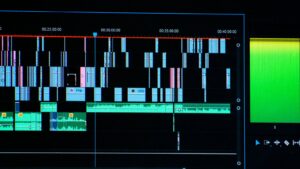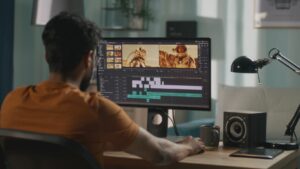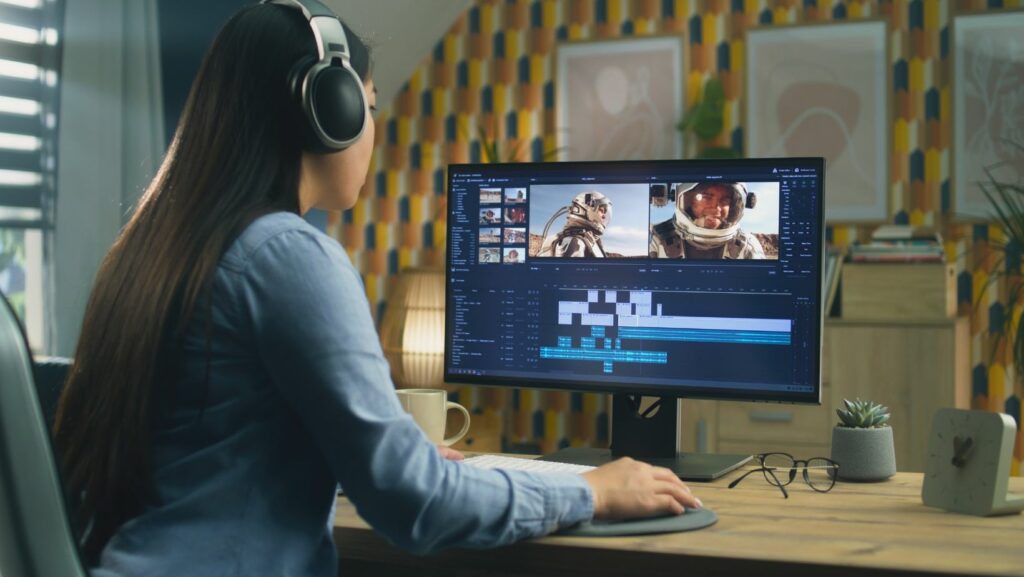Key Takeaways
- GIMP 2.10 Overview: A powerful, open-source image editing tool that offers advanced features for both beginners and experienced designers, enabling diverse creative projects.
- User-Friendly Interface: GIMP 2.10 provides a customizable layout, making navigation easy through essential tools, layer management, and an intuitive workflow.
- Advanced Editing Tools: This software includes a rich set of tools such as selection, painting, transformation, and text tools, allowing for versatile image manipulation and graphic creation.
- Layer Management Features: Efficient layer management with options for adjustment layers, masks, and grouping enhances non-destructive editing capabilities and project organization.
- Basic Editing Techniques: Users can effectively import, filter, and enhance images through various methods, ensuring high-quality results in their digital artwork.
- Productivity Boosting Tips: Custom brushes, shortcuts, and various advanced techniques help users streamline their workflow, maximizing GIMP 2.10’s potential in creative projects.
GIMP 2.10 is a powerful, open-source image editing tool that rivals some of the industry’s best software. Whether you’re a seasoned designer or a curious beginner, mastering GIMP can unlock endless creative possibilities. With its rich features and customizable interface, users can easily manipulate images, create stunning graphics, and enhance their artistic projects.
In this tutorial, readers will discover essential tips and techniques to navigate GIMP 2.10 effectively. From understanding the interface to exploring advanced editing tools, this guide aims to empower users to harness the full potential of GIMP. Get ready to dive into a world of creativity and transform your digital artwork with confidence.
GIMP 2.10 Tutorial
 GIMP 2.10 serves as an advanced image manipulation program, offering a wide array of features for image editing, graphic design, and digital art. Users benefit from its extensive toolkit, which includes options for photo retouching, composition, and image authoring.
GIMP 2.10 serves as an advanced image manipulation program, offering a wide array of features for image editing, graphic design, and digital art. Users benefit from its extensive toolkit, which includes options for photo retouching, composition, and image authoring.
GIMP 2.10 showcases a user-friendly interface, allowing for easy navigation through tools and functions. Customizable layouts enhance user experience, enabling individuals to adapt the workspace to their individual workflow preferences.
Support for high bit-depth images helps maintain the quality during editing processes. Features like layer groups, improved filters, and the capability to work with multiple files simultaneously increase efficiency for professional users.
The software’s plugin ecosystem strengthens its functionality. Users can install additional plugins that extend capabilities, ensuring GIMP remains versatile for various creative projects.
GIMP 2.10 also supports numerous file formats, including JPEG, PNG, TIFF, and more. This compatibility allows effortless import and export, catering to different user needs in the creative field.
Updated color management ensures accurate color representation, critical for projects requiring precision. The integration of new tools enhances overall editing capabilities, allowing users to create detailed and vivid artwork.
With these features, GIMP 2.10 stands out as a robust alternative in the realm of image editing software.
Getting Started With GIMP 2.10
GIMP 2.10 offers a robust platform for image editing. Users can quickly set up the software and navigate its features to start enhancing their images.
Installation Process
 To install GIMP 2.10, follow these steps:
To install GIMP 2.10, follow these steps:
- Download Installer: Visit the official GIMP website. Select the version compatible with the operating system (Windows, macOS, or Linux).
- Run Installer: Locate the downloaded file and double-click to initiate the installation.
- Follow Prompts: Complete the installation by following the on-screen instructions. Choose installation options like custom directories as necessary.
- Launch GIMP: Once installed, open GIMP from the application menu or desktop shortcut.
User Interface Navigation
Understanding the GIMP 2.10 interface is essential for efficient usage. Key UI elements include:
- Toolbox: Contains essential tools for selection, painting, and transformation. Users can click to access tools and adjust their settings.
- Image Window: Displays the current image being edited. It updates in real-time as edits are made.
- Layer Panel: Manages layers effectively. Users can create, delete, and organize layers for better control over image composition.
- Menus: Access File, Edit, and other main options. Each menu contains relevant commands and settings for image manipulation.
- Status Bar: Displays helpful information regarding the current tool and image status. Users can monitor actions taken in real-time.
Navigating GIMP 2.10 streamlines workflow, allowing users to focus on their creative tasks efficiently.
Essential Tools And Features
GIMP 2.10 offers a comprehensive set of tools and features essential for effective image editing and graphic creation. From versatile options to advanced layer management, these functionalities enhance user experience and creative output.
Tool Options
GIMP 2.10’s toolbox presents various tool options that cater to a range of editing tasks. Users find essential tools such as:
- Selection Tools: Tools like Rectangular Select, Elliptical Select, and Free Select allow precise selection of image areas for editing.
- Painting Tools: Brush, Pencil, and Airbrush tools offer flexibility in creating digital artwork and enhancing images.
- Transformation Tools: Tools like Scale, Rotate, and Shear enable users to modify image dimensions and orientations efficiently.
- Text Tool: The Text tool facilitates easy integration of text, with adjustable fonts and styles to match design needs.
- Path Tool: The Path tool assists in creating complex shapes and selections, allowing for intricate edits.
These tools combine to provide a robust editing experience, enabling users to carry out various image manipulation tasks swiftly.
Layer Management
Layer management in GIMP 2.10 plays a vital role in non-destructive editing. Users benefit from features such as:
- Layer Panel: The Layer panel organizes all layers in the project, facilitating easy visibility and selection.
- Adjustment Layer: Users can add adjustment layers for modifying colors and effects without altering the original layer.
- Layer Masks: Layer masks provide flexibility by allowing partial transparency, enabling seamless blending of images.
- Grouping Layers: Grouping layers aids in managing multiple layers, organizing complex projects neatly.
- Layer Effects: Users apply various effects to layers, such as drop shadows and opacity changes, enhancing depth and dimension.
Effective layer management empowers users to work efficiently, enabling users to control various elements within their projects and ensuring a smooth editing process.
Basic Editing Techniques
Basic editing techniques in GIMP 2.10 allow users to manipulate images effectively, enhancing quality and creativity. This section covers key methods, such as importing images and applying filters and effects.
Importing Images
Importing images begins with selecting “File” from the menu, followed by choosing “Open” or “Open as Layers.” Users can browse for files in various formats, including JPEG, PNG, and TIFF. Dragging and dropping images directly into the GIMP workspace also works efficiently. After importing, images appear in the layers panel, allowing for easy organization and manipulation. To properly edit, users should ensure that the image resolution matches their project requirements.
Using Filters And Effects
Using filters and effects enhances images remarkably. GIMP 2.10 offers numerous filters located under the “Filters” menu, including Blur, Enhance, and Distort. Users can apply filters by selecting the desired layer, then choosing a filter type. Adjustments can be made in filter dialog boxes to tailor effects to specific needs. Effects such as drop shadows, bevels, and color adjustments further enhance design. Experimenting with layer modes and opacity settings also provides creative depth. Regularly using the undo function ensures that users can easily revert unwanted changes.
Advanced Tips And Tricks
This section provides advanced techniques to maximize the capabilities of GIMP 2.10. It emphasizes customizations that improve workflow and efficiency.
Custom Brushes And Patterns
Creating custom brushes and patterns enhances the editing experience in GIMP 2.10. Users can design unique brushes to match their artistic vision. To create a custom brush, begin by selecting an image or drawing a shape. Use the “File” menu to export the selection as a brush. The new brush appears in the toolbox, allowing users to apply it to their projects with tailored effects. Similarly, patterns can be created by selecting a portion of an image, exporting it as a pattern, and accessing it through the “Patterns” dialog. These personalized tools bring versatility to creative projects.
Shortcuts For Efficiency
Utilizing keyboard shortcuts significantly boosts productivity in GIMP 2.10. Memorizing commonly used shortcuts streamlines tasks and saves time. For example, pressing “B” activates the brush tool, while “E” selects the eraser tool, enabling quick transitions between editing tools. The “Ctrl + Z” command undoes actions, ensuring effortless corrections. Customizing shortcuts through the “Edit” menu allows users to tailor the experience to their preferences. Make a list of frequently used shortcuts for quick reference, and enhance efficiency while navigating through GIMP’s features.
GIMP 2.10 stands out as a versatile tool for anyone looking to elevate their image editing skills. Its extensive features and user-friendly interface make it accessible for both novices and seasoned professionals. By understanding its tools and functionalities users can unlock their creative potential and produce stunning visuals.
The tutorial offers a solid foundation for getting started and encourages exploration of advanced techniques. With practice and experimentation users will find GIMP 2.10 an invaluable asset in their digital art journey. Embracing its capabilities can lead to impressive results and a more efficient workflow in any creative project.

